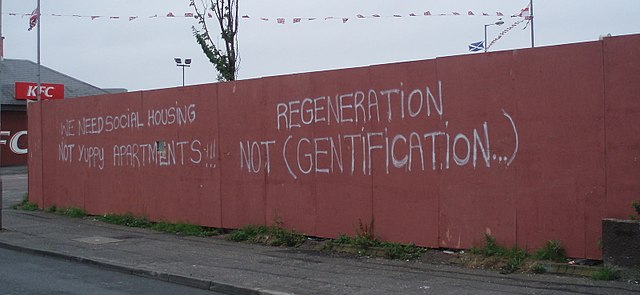What I Wish The Green New Deal Hadn’t Left Out
Greening our infrastructure is part of the solution, but so’s city planning.
 While there’s certainly been no shortage of criticism of last week’s Green New Deal resolution, the common line hasn’t been that the resolution doesn’t try to cover enough ground. On the contrary, it’s been called an everything-but-the-carbon-sink approach; even Trevor Noah devoted a few minutes of the Daily Show to gaping at the proposal’s efforts to tackle not just greenhouse gas emissions, but social and economic inequality as well.
While there’s certainly been no shortage of criticism of last week’s Green New Deal resolution, the common line hasn’t been that the resolution doesn’t try to cover enough ground. On the contrary, it’s been called an everything-but-the-carbon-sink approach; even Trevor Noah devoted a few minutes of the Daily Show to gaping at the proposal’s efforts to tackle not just greenhouse gas emissions, but social and economic inequality as well.
Others have done a great job of explaining why ambitious climate policies are needed, why tackling all these issues at once actually makes sense (spoiler alert: the economy and the environment are inextricably linked), and why the proposal does a good job of outlining the contours of this complex conversation while wisely leaving side-choosing to another day—so I’m not going to do any of those things here. Instead, I’d like to focus on something the proposal largely leaves out: thinking about meaningful land use policies designed to promote reductions in greenhouse gas emissions.
That’s not to say that the proposal doesn’t talk about greening our cities—it does—but the resolution focuses its attention on (1) efficiency upgrades to new and existing buildings and (2) transportation improvements in the form of increased infrastructure to support zero-emissions vehicles, high-speed rail, and public transit. These are good, and ambitious, goals; it will be particularly challenging, for example, to retrofit all existing buildings for maximum environmental efficiencies. But such policies also leave out an important part of the question: what mix of land uses is promoted, and in which locations.
Environmentally efficient buildings are good, but it matters whether those efficient buildings are sited in exurbs or urban cores. Upgraded public transit would be fabulous, but with ridership numbers on the decline nationwide, we’ll reap the biggest benefits of transportation improvements only when we think carefully about where those improved transit lines run, who rides them, and how we can promote the right mix of transit-oriented land uses to make ridership numbers rise again. And in light of the Green New Deal’s focus on equity and inclusion, thinking about the impacts of gentrification and displacement is necessary to ensure that we maximize the benefits of green development and transportation improvements in a way that supports our most vulnerable communities instead of uprooting them.
The Green New Deal aims to invest significant resources to upgrade our infrastructure society-wide. In the coming weeks, months, and years, as policymakers start thinking about the specifics of the proposal, there will be an opportunity to weave land use planning into the mix. Legislators can think about ways to condition federal funds for new green buildings and transit upgrades; proper accounting of transportation sector emissions; and redirecting federal funding from emissions-intense projects (like new highways) to emissions-reducing ones (like electrified rail).
It’s no mystery why land use was left out of the resolution—land use issues are notoriously thorny and emotional. But the Green New Deal is calling for a massive investment of public dollars in a new green society. Comprehensive land use planning is an important part of making sure those dollars are well-spent.






Reader Comments